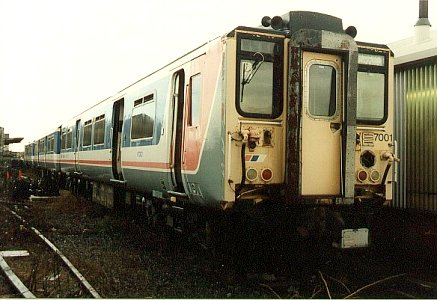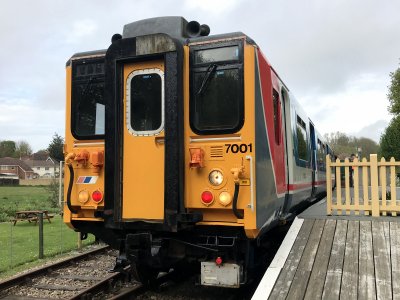 Established 1996
Established 1996
Suburban Electric Railway Association
Support Your Local Train
British Rail Class 457 DMSO 67300
67300 is a driving motor second car from a class 457 unit, numbered 7001. There was only one unit in this class because it was an experiment. The testing and evaluation work carried out with 7001 shaped the future of electric trains built world wide in the last decade of the 20th century and beyond. It is fair to say that every electric train built since 1993 owes a part of its design to this unit. Therefore we regard 67300 as one of the most important modern traction vehicles in preservation. It had a very convoluted story to get there though....
The origins of this go back to the mid 1970s when British Rails engineering development unit had ambitions for a new style of diesel electric multiple unit that would replace the first generation diesel units on non electrified lines across the country. The same people had been working on the High Speed Train and used some of their experience of that project for this one. The units had to be able to match an electric train for acceleration and reliability. In 1981 the two class 210 Diesel Electric Multiple Unit (DEMU) prototypes were built at BREL's Derby Litchurch Lane works; a four car unit 210 001 and a three car 210 002. These units were designed around the 20m Mark 3 suburban vehicle body shell that had been used for class 317 EMUs. They were put to work on traffic around the Great Western lines with the three car set often working suburban diagrams based out of Southall shed as it was second class only whilst the four car which featured a first class area on one of the trailer cars was used on the longer distance workings from Reading depot to Oxford. In October 1983 210 001 went on a months trial in Scotland and worked as far afield as Fort William, Inverness, Dundee as well as trips between Glasgow and Edinburgh. Despite being highly successful the design was to prove too costly and no more 210 DEMUs were built, BR opted for Sprinter units to replace its older stock in the 80s. The two prototypes continued to work out of Reading depot up until the mid 1980s on Basingstoke and Newbury trips but were eventually withdrawn and taken to Eastleigh works where they went into store. The story should have ended there but fate was to intervene.
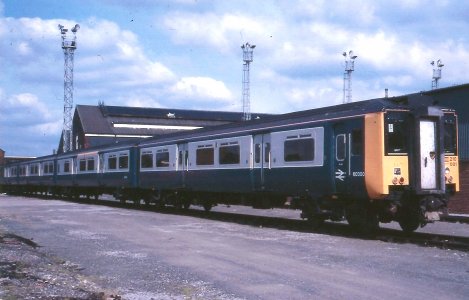
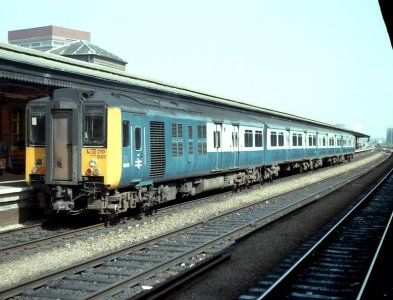
In the late 1980s British Rail were looking to create a new breed of EMUs, the traction equipment on these would be a radical departure from anything that had been used before anywhere in the world. The motors would run on three phase AC current as opposed to DC. The theory being that AC motors are smaller and it is possible to have more of them for a small increase in current draw from either the third rail or overhead line equipment. They were better suited to rail use as modern electronic control would accelerate them more efficiently than the resistance stepping of DC motors and being lighter would significantly reduce the wear upon the track and thus reduce track maintenance. All of this was seen as a step forward in traction equipment for the UK. The trouble was that three phase traction had never run in the UK and a test bed unit would be required to see if its use had an adverse effect on signalling and power supply as the new generation of EMUs would have to run on existing infrastructure. The engineers looked to some of the now redundant class 210 DEMU vehicles as the basis of their test bed unit.
The vehicles selected were the driving trailers of both DEMUs together with a trailer open second from the three car unit. These were converted during 1988/9 with traction equipment being fitted to the driving vehicles 67300 and 67301, each axle of the vehicles carried a small AC traction motor and between the bogies was the inverters and converters that would turn the line volts DC supply into three phase AC to feed the motors. The vehicles were fitted with interference monitors that were designed to prevent rouge pulses feeding into the track and disturbing track circuits. The three car unit was classified as class 457 and numbered 7001 in keeping with the Southern Region tradition of only using the last four digits of a unit's TOPS number. Testing began in 1989 on the Southern Region using the Shepperton branch. A vehicle with an additional air compressor was needed in the formation so a class 455 TSO was borrowed to strengthen the unit to four cars. One side of each motor coach was branded with the slogan 'Traction Development For The 1990s' and some passenger runs took place through 1990 between Waterloo and Windsor. The next stage of the test plan was to see how the unit behaved under wires on AC supply so the 455 trailer was swapped for a vehicle from a 313 AC unit which provided a transformer and a pantograph. The unit was re-numbered as 316 999 and spent many months on the Eastern region being evaluated. The unit returned for final testing on the Southern Region in 1991, the 313 coach being again replaced by the 455 TSO (unit number again became 7001). The testing came to an end and the unit went into store at Eastleigh works late in 1991.
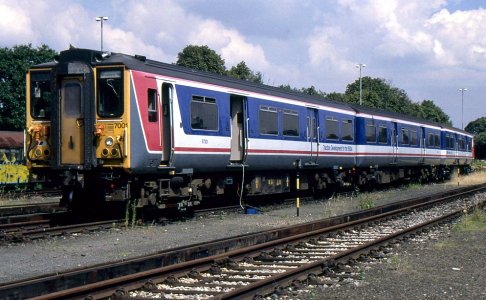
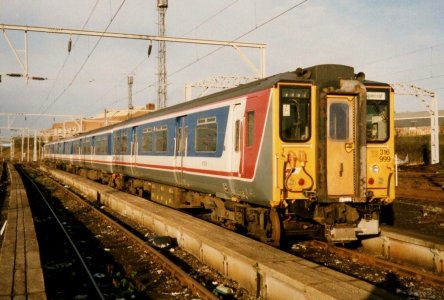
7001 had proved that three phase traction was viable on Britain's existing infrastructure. It certainly hadn't performed faultlessly out of the box, but had provided the engineers in charge of the project with challenges to overcome and the data gathered and lessons learned enabled the situation we have now whereby all EMUs built after 1993 have three phase equipment as standard. Both motor coaches of 7001 became available for disposal in 2001 and they were acquired by the SERA. 67300 was always intended for restoration in its guise as three phase pioneer 7001, whilst 67301 was held pending a scheme to reform a 210 DEMU, the later scheme failed to attract sufficient support and 67301 was sold back to a rolling stock lease company in 2004. 67300 has been restored as an example of a significant stage in the story of electric railways, which you can read about from our projects page.
67300 was originally numbered 54000 and was the driving trailer second from the four car unit 210 001, it was renumbered when converted to a 457. The vehicle was moved from the Electric Railway Museum to the East Kent Railway in May 2018 and is usually on display and open to the public at Eythorne station.
